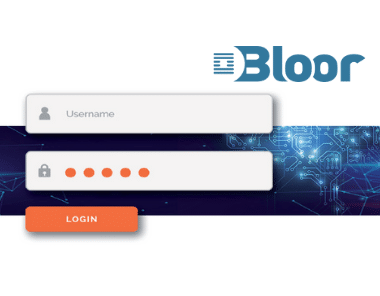When the famous line “no man is an island” was penned 399 years ago, little did Donne know he was forecasting the future of businesses. No business acts independently, instead relying on an ever-increasing digital supply chain. This brings a whole host of benefits – remote working, for example, would not have been possible without organisations like Microsoft giving us Teams (or your organisations’ equivalent). But with great benefit, comes great risk.
IT outages are a serious concern for businesses today. According to Gartner, the average cost of an IT outage is a staggering £4,500 per minute. For small-medium businesses, the costs can be devastating. These outages can cause significant disruptions in operations, loss of revenue, and damage to a company’s reputation. Despite the benefits of moving to the cloud, companies still face challenges with this shared responsibility model.
The challenge of cloud services and shared responsibility
A move to the cloud means entering a shared responsibility model with the cloud service provider. This model sometimes leads to blurred lines of accountability, especially during an IT outage.
Relinquishing control to a cloud provider means the Service Level Agreements (SLAs) become the primary method of holding providers accountable. However, these SLAs may sometimes seem lax to clients, especially during a critical outage, leaving them feeling vulnerable and exposed. In practice, SLAs can cause more harm than good. It’s not unheard of for a supplier to ignore faults on a critical service in favour of less vital tasks, simply to minimise penalties.
Take Microsoft 365’s 99.99% uptime SLA. There are so many exceptions – virus detection, spam effectiveness and false positives for example – that render the SLA disappointing at best. Spam, for example, is generally accepted as a subjective classification, and Microsoft relies on the user to provide evidence. Only after this evidence shows spam effectiveness has fallen below 99% for more than 1 week can you claim service credit. Consider a company of 250 employees that will, by 2026, receive 30,000 emails per day. That means 300 unwanted or malicious emails before falling below the uptime SLA.
There are clear benefits moving to the cloud from on-prem, but naivety to the downsides is dangerous. SLAs are a step to mitigating the concerns, but need to be part of a wider picture, especially during an outage.
The importance of clear communication during an outage
In the event of an outage, clear and concise communication is paramount. Companies often fall into the trap of using technical jargon and impersonal communication, which can leave clients feeling frustrated and unsupported. It’s essential to convey the right information in a manner that’s easily understandable to all stakeholders. Microsoft have recognised this, and deal with such a level of disruption, that they have a dedicated Twitter feed just to keep customers up to date.
Microsoft 365 outages
Microsoft 365 outages are a relentless challenge. Just last week, Microsoft Outlook, Teams, OneDrive for Business, SharePoint Online, and other Microsoft 365 services all went down for nearly eight hours, causing chaos. Organisations were left frustrated as users were unable to access crucial emails and services for hours. Although Microsoft rolled back the problematic update and reported service improvement, another outage occurred shortly after, again impacting thousands of users.
The regularity of outages raises concerns about the reliability of their security services, which small-medium organisations are starting to use in an effort to consolidate. If Teams, a critical communication and collaboration platform, continues to suffer frequent disruptions, it begs the question of whether their security services can provide the necessary level of protection. Small and medium-sized organisations in particular need reassurance that their business operations and data are secure.
A deep dive into the Mimecast outage
Just days ago, Mimecast experienced a severe outage that affected mail flow and login access on the UK Grid, causing severe issues that left clients with no email access for 24hours. The outage affected a variety of services, including Email Processing, Administration Console, Search, Web Security, Awareness Training, CyberGraph, Attachment Protect, Impersonation Protect, URL Protect, and User Applications.
The recovery process was not easy, or fast. During the outage, customers had trouble logging into the Mimecast Community and issues with email processing queues and long delivery delays. Emails are an essential communication tool for many businesses, and these delays could have resulted in missed deadlines, delayed responses, and lost opportunities.
The Barracuda vulnerability
While not an outage, Barracuda Networks recently experienced a significant vulnerability within their email security gateway (ESG) devices. The exploitation of this vulnerability, tracked as CVE-2023-28681, allowed unauthorized access to a subset of ESG appliances and the installation of malware that provided persistent backdoor access for attackers.
Upon detection of the vulnerability, Barracuda initially issued a patch and deployed a script to contain the incident. However, further analysis revealed that the vulnerability had been exploited since October 2022, several months before detection.
Looking beyond the outage
Working in a digital world requires constant vigilance. An interruption to email services can bring businesses to a standstill, disrupting productivity and affecting continuity. However, there’s a graver concern that trumps even that: the prospect of delivering unscanned emails due to a security outage.
When security protocols falter, it leaves a wide-open field for cyber threats. If emails are delivered without going through security checks, it paves the way for malware, ransomware, phishing attempts, and so much more. The majority of attacks start in the inbox and can have severe consequences when unchecked. From data breaches and compromised customer information to financial loss and irreparable reputational damage. In this sense, the repercussions extend far beyond mere business continuity issues, underscoring the need for robust, reliable, and fail-safe email security solutions.
Digital world challenges
The recent outages experienced by Mimecast, Microsoft, and the vulnerability exploited in Barracuda underline the importance of robust, reliable, and secure email services in our increasingly digitized world. Not only do these incidents disrupt business operations, they also expose organisations to severe cyber threats that could lead to significant financial and reputational damage.
The shared responsibility model in cloud services underscores the need for organisations to remain vigilant and proactive in managing their security. However, as we’ve seen, even cloud giants aren’t immune to outages and security breaches. A consolidation of security services through platforms such as Censornet can offer a promising solution. By ensuring email continuity, robust threat protection, and seamless user experience, these platforms can significantly mitigate the impact of such outages.
Ultimately, the digital world requires constant vigilance and a commitment to security at all levels. The challenge lies not just in averting outages, but in ensuring the continuity of operations and the security of data when they do occur. The experiences with Mimecast, Microsoft, and Barracuda remind us of the importance of having robust security measures in place, and the value of platforms like Censornet in maintaining business as usual in the face of unexpected disruptions.







